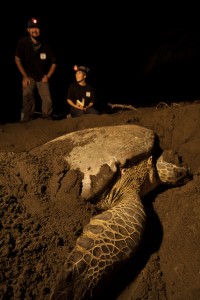BEAVERTON, OR -- Conservation tourism has surged in popularity as travelers continue to seek meaningful opportunities to immerse in and support the natural environments and communities they visit. However, it can be difficult for tour participants to determine just how much of their financial commitment directly benefits conservation projects and the local economies. SEE Turtles has eliminated this guessing game with a unique pricing model that clearly lays out the economic impact of conservation tourism dollars on environmental sustainability and responsible community development.

Conservation tourism is travel that supports efforts to protect endangered species through fees and donations and benefits local communities. It can increase awareness and appreciation for our planet’s environmental and ecological concerns among participants while delivering a much-needed sustainable source of revenue for conservation efforts. These tours also provide a viable economic development alternative for local communities that have few other income-generating options. Guests on SEE Turtles trips, for example, can engage in meaningful turtle conservation initiatives alongside local sea turtle researchers.
SEE Turtles’ Conservation Pricing demonstrates how their tour guests’ financial contributions contribute to the sustainability of turtle conservation projects and the surrounding communities. On the project website, each tour lists —in dollars and percentage– the estimated per person amount that each tour allocates to two key areas: Conservation and Turtle Communities:
- Conservation includes fees and donations given to local conservation organizations to protect turtle habitat, hire local residents, and support scientific research and to SEE Turtles to promote our educational programs. For volunteer trips, this also includes the value of donated time.
- Communities represents the direct and indirect spending by tour guests to support locally-owned businesses near sea turtle hotspots including hotels, restaurants, shops, and entertainment venues. Such income helps communities recognize the value of sea turtles as an important resource to protect and inspires local support for conservation.
“Travelers are becoming increasingly aware of their responsibility to help protect nature and local cultures,” said Jim Dion, Associate Director, Center for Sustainable Destinations at National Geographic. “SEE Turtles’ Conservation Pricing Model sets a new standard for transparency that will help travelers to evaluate tourism options and feel confident their travel dollars are benefiting local communities and conservation efforts.”
